Isaac Penn is a fibre artist, textile designer and clothier originally from Canada but now based in Berlin. Penn’s pixelated weaves slow down time: he uses an array of images, all familiar in our daily visual feeds but not quite recognisable. From a young torso moving to an unheard beat or women in ubiquitous Middle Eastern landscapes, dressed in burqa, their masses of fabric being folded and sculpted by unseen sandstorms, Penn’s textiles always seem to be hinting at another mode of life. His use of collage, photographs and iconic brands like FUBU are all politically mysterious. He has a penchant for greyscale palates. With images blown up and pixelated, draped or hung from walls, one can’t help thinking of computer screens or news feeds of low-fi in-situ documentation. Perhaps this is an implicit gesture from the artist regarding what we see as valuable imagery today and how close we are to actually feeling it as a representation of life.
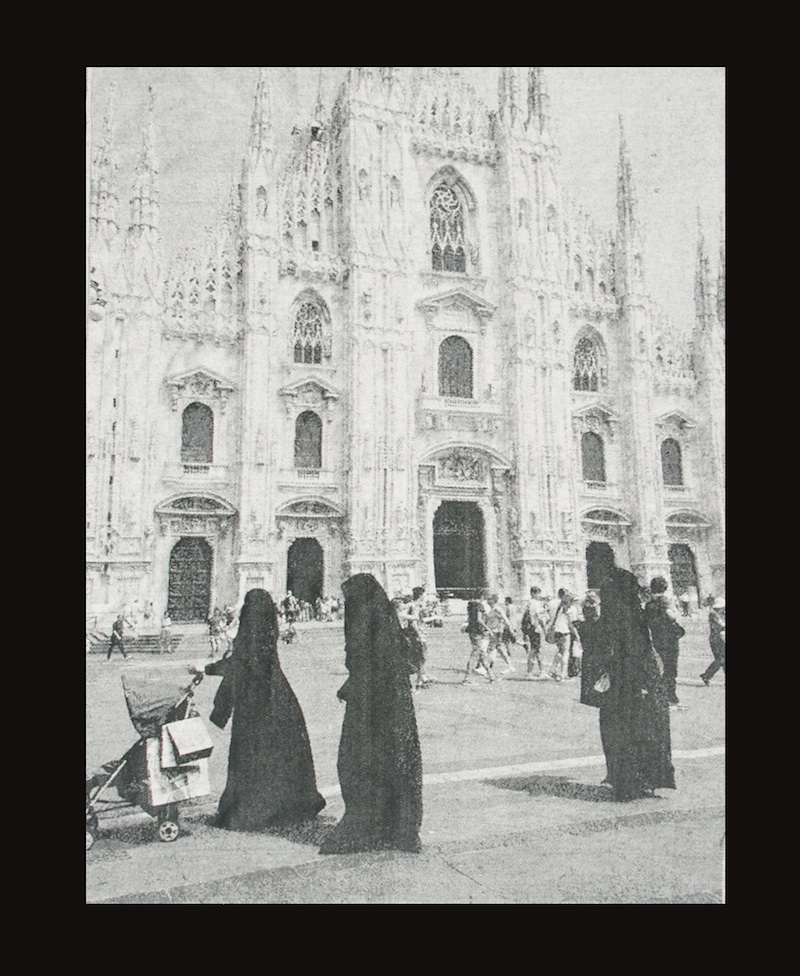
Isaac Penn: ‘Duomo Ladies’, 2015 // Courtesy of the artist
Penny Rafferty: Has your practice always been linked to textiles?
Isaac Penn: I started making clothing when I was in high school because I couldn’t afford the garments I wanted. Making clothes was fun and simple, but it didn’t take very long, manually. There was far more prototyping and sketching than actual physical “making”. After a year of menswear tailoring in college, I figured I wanted to slow down the process of making clothing. How could I make one full look, instead of a full collection, in the same amount of time? I started developing and manipulating my own materials. I gained a library of techniques from embroidery (embellishment), surface design, weaving, knitting, crochet, knotting, dyeing and digitally-enhanced structures.
PR: So, for you, it grew out of a necessity to slow down rather than the fashion industry’s demand for acceleration season after season?
IP: The history of textile processes is over 5000 years old, far longer than fashion. I felt empowered to be part of something so historically saturated. Now, objects are being produced more frequently than ever before in history. Materials now need to diversify and enhance the objects we consume and experience in our daily and external environments; this is how the market keeps growing.
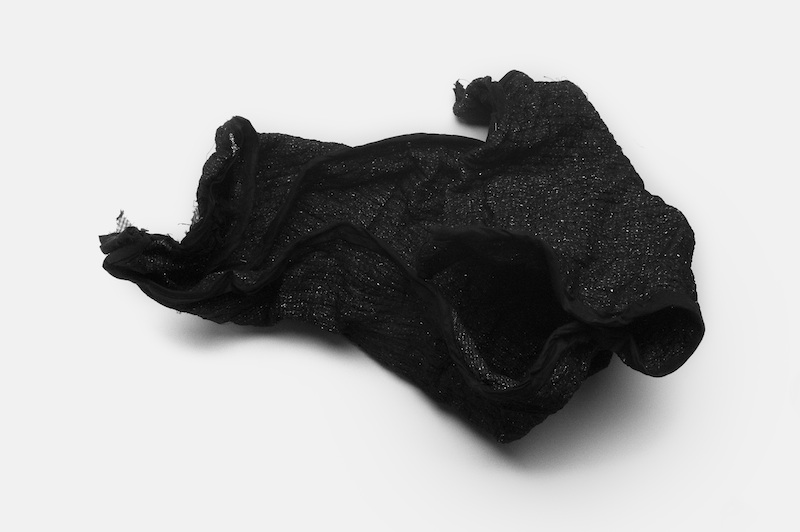
Isaac Penn: ‘Aluminum Seersucker’, Silk // Courtesy of the artist
PR: How do you see your role today, then?
IP: As a textile designer, I’m interested in the foundational and basic design elements; finding practical solutions through process and practice. Attention to details, assessing one’s real needs and requirements, leads to decision making through very simple gestures. Common sense drives the discovery, curiosity and experimentation, process. I try to see the poetics and semantics of production.
PR: During our initial conversation, you likened your use of the Jacquard Weaving technique to the first computer, can you go a little more into this?
IP: The Jacquard loom has had a huge influence on computing technology. The mechanical loom was one invented by Joseph Marie Jacquard in 1804. The loom uses physical punched cards to develop pixel-based patterns such as brocades, damasks and matelassé fabric. Its ability to change the loom’s pattern by simply changing punch cards was a conceptual precursor for the future of data entry, as we know it today. Pixels are basic and foundational and easy to control; all one’s mistakes can be fixed and altered, which gives the creator full control of their own processes.
PR: The images you use seem to have been filtered through Photoshop. They have a pixelated quality to them.
IP: The Jacquard weavings come from photographs I’ve taken and altered in postproduction. These images need to be reduced to a simple value/tonal range so that I can assign different woven structure to different values. It isn’t so much that technology affects my work, but I need to work with it, to come out with something successful. By successful I mean pictorial: something that should be woven instead of painted. That is the biggest discussion: is this medium or technique appropriate for this subject matter and for the end goal? Jacquard looms are very expensive; weavings require a lot of time and a large material (production) cost. I’m always asking myself, does this make sense for me to create it or am I just making more stuff for my own ego and hedonism? It’s pretty hedonistic to just make things with no intention.
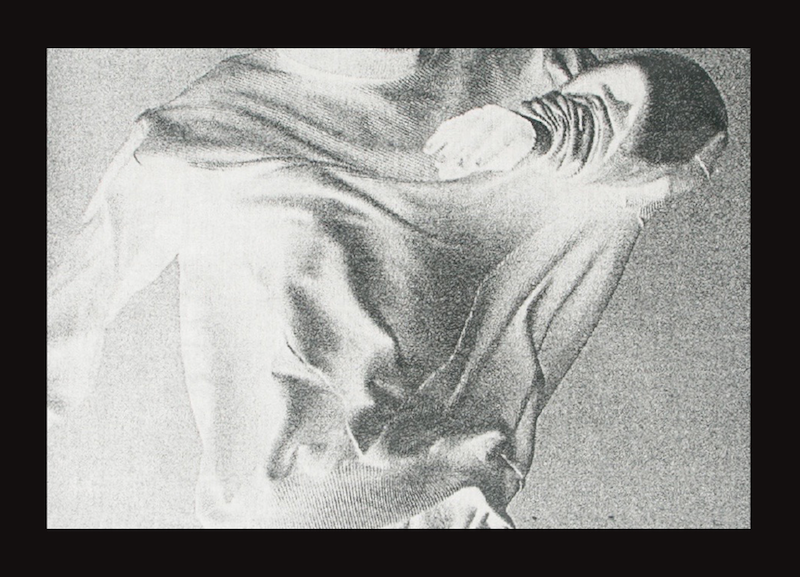
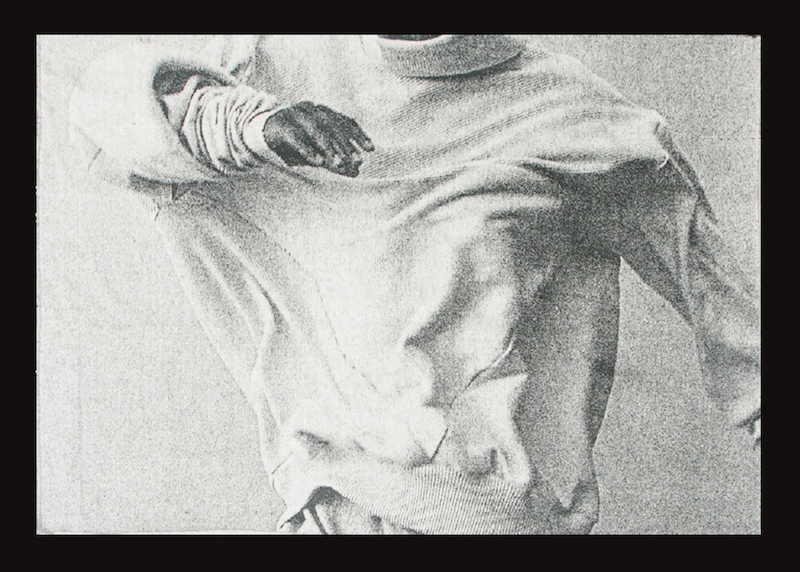
Isaac Penn: ‘Draped Shirt Jacquard’, 2015 // Courtesy of the artist
PR: The digital and material also seem to be in flux through your weaves. Is this a way to navigate both sectors of your life?
IP: I gravitate more to analog work. I like being able to fix my own mistakes and be more in control of my process. The material is in constant flux and each material has its own behavioural patterns that lead to a variety of results. Although the programming for digital application in textiles is quite standard, the combination with natural materials that have their own dispositions is an engaging dialogue. Some people fight with their materials and others try to allow the materials to behave naturally. The variation in results is what keeps people making, I guess.
PR: We are moving more and more into slick and smooth devices as far as our home or tech wares go. Do you think textiles as sensory space are in danger of becoming detrimental to our home life?
IP: No, people like to feel things. Also, print and pattern have played such a heavy role in society over the last couple of decades, from textural elements to contemporary design. DIY culture has also led people into a place of understanding how things are made and new ideologies have grown out of this. Take upcycling: people have become the new designers, wanting to make their own clothes, furniture and objects. With this development, people are starting to see the true price of goods and the ethics behind mass production. This moves people away from buying the t-shirt that costs $10 and allowing more sensitivity to the contemporary consumer and the makers themselves.
People wanted things cheap for a while and they got disappointed with the results. Now people want things they can alter or make their own: money isn’t too much of an issue. Look at a pair of Vetements jeans, for example. It’s about the unique space of the textile in society.
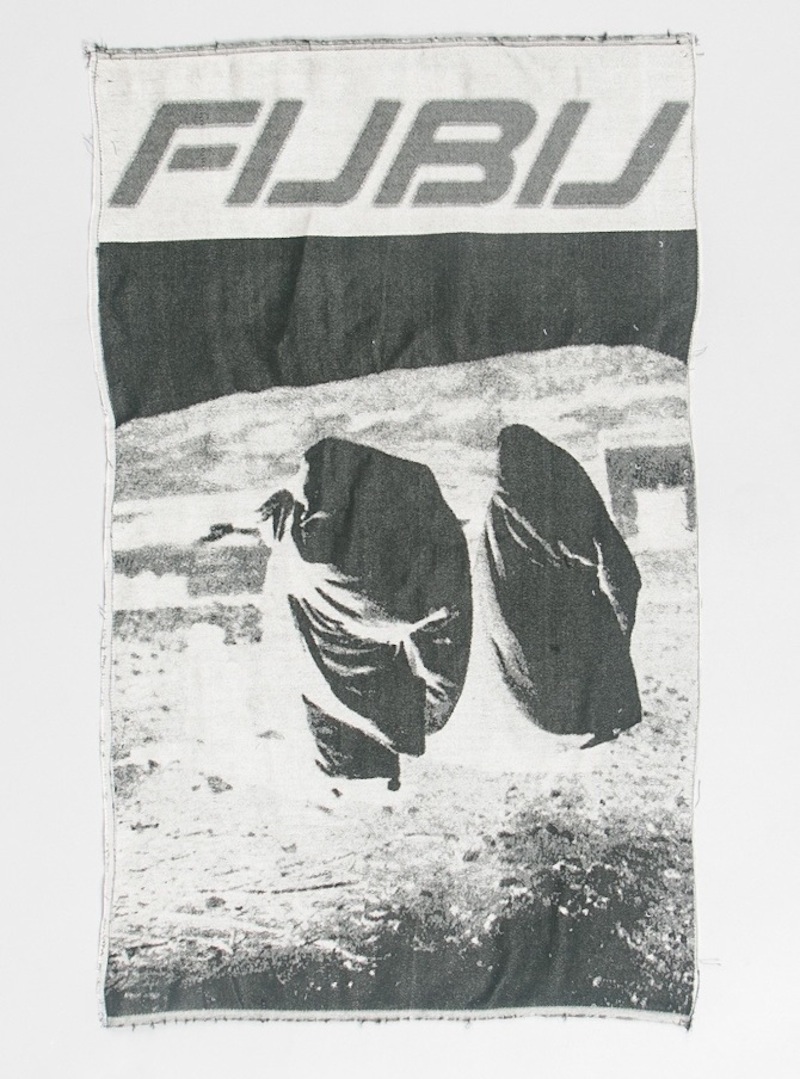
Isaac Penn: ‘FUBU Jacquard’, 2015 // Courtesy of the artist
PR: The infamous Vetements DHL t-shirt is an interesting twist in this production, though, right? Original retailing at £185, knock-off online for £10, almost impossible to tell the real from the fake to the untrained eye.
IP: Vetements will just keep on getting more right! I don’t mean better or good, but their work is the most appropriate in contemporary fashion design. The variety of looks from the last show was such an iconic approach. They showed the fashion industry that people want to make their own looks now. When you look at a group of kids on the street, everyone has their own style, it’s not like a group of punks, skins, goths: there is a goth, a club kid, a streetwear enthusiast, a classic bad-boy Yohji Yamamoto silhouette. Vetements hits all the notes. Making clothing for a range of personalities is a way to speak to a broader audience. Making clothing that you can and are encouraged to make yourself is also a new way that brands like Vetements are identifying with their consumers lust for control and individuality.
PR: Would you say DIY-making, for you, is part of a political platform of self-sustaining production, then?
IP: Yes and I galvanise it. If people make their own textiles they understand how things are actually made. It brings awareness to the supply chain and how much things cost. The best way to see the price and difficulty of making something is doing it yourself. It’s also a good way for people to find their own sense of expression in a heightened state of neoliberalism. It’s also a way of making things on a limited and more controlled scale rather than outsourcing t-shirts, for example, where a minimum order is over $1000.
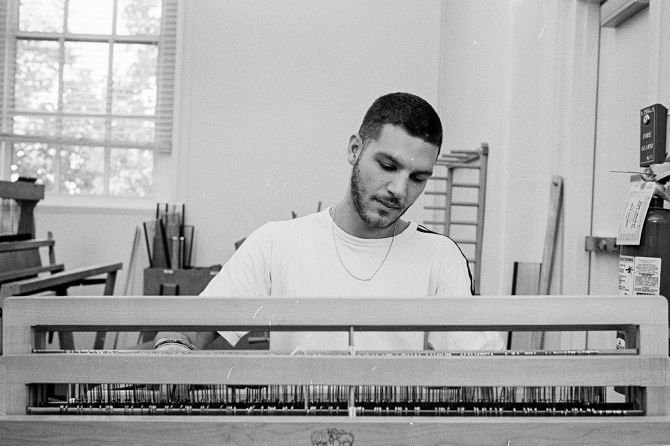
Portrait of Isaac Penn // Courtesy of the artist
PR: You spoke about hedonism and ego via materialization before and now we have slipped into couture fashion. What are your final thoughts?
IP: I think making things is a luxury. It feels good; you are absorbed in something and can alienate yourself. The processes are so repetitive that you have time to think. Slowing down: this is also a luxury. On the other hand, we don’t need any more things and especially not laborious handmade things. But allowing a strong sense of individuality and expression is exactly what we do need, from the foundations of textiles to the clothes we wear on our backs.

























